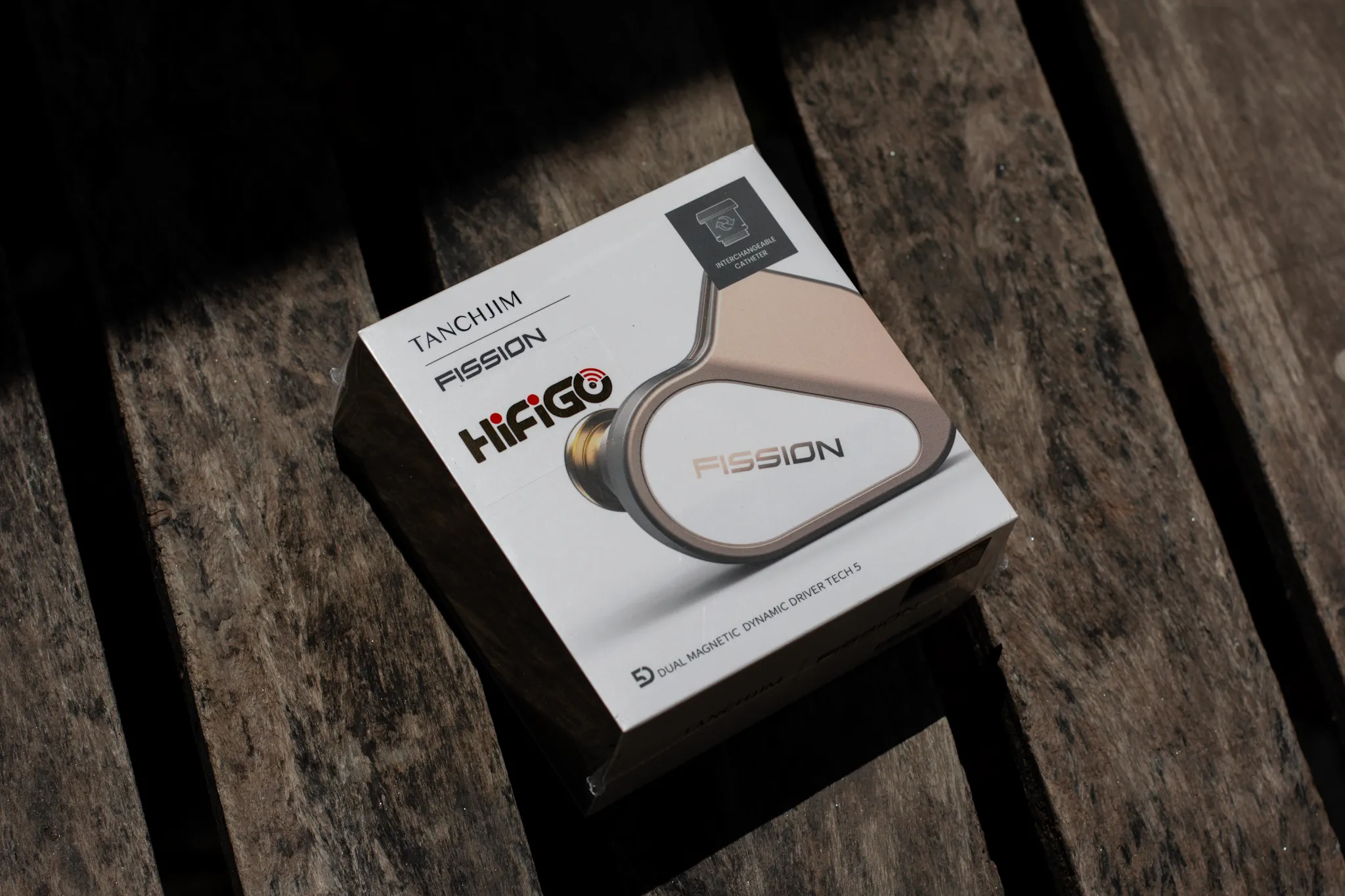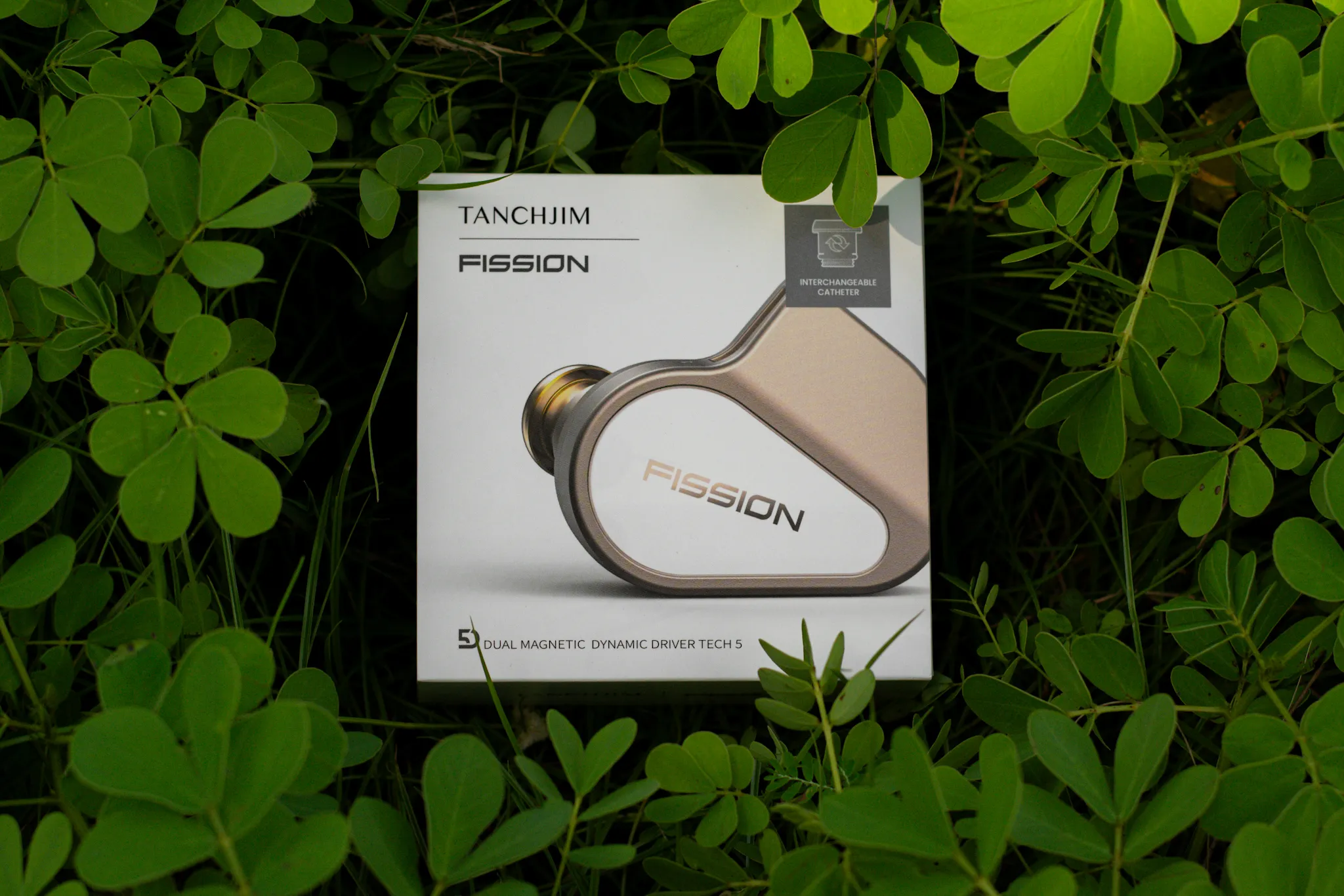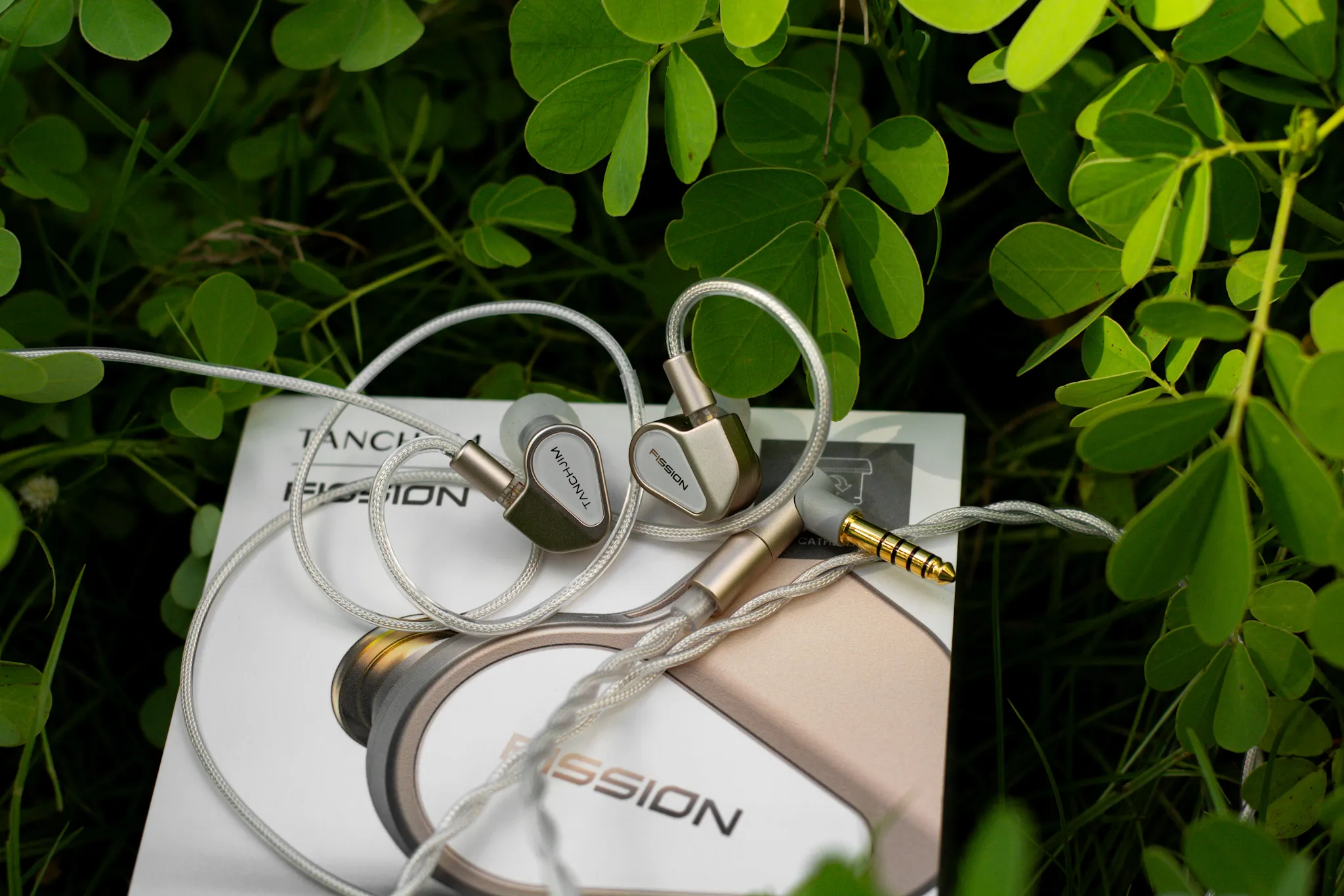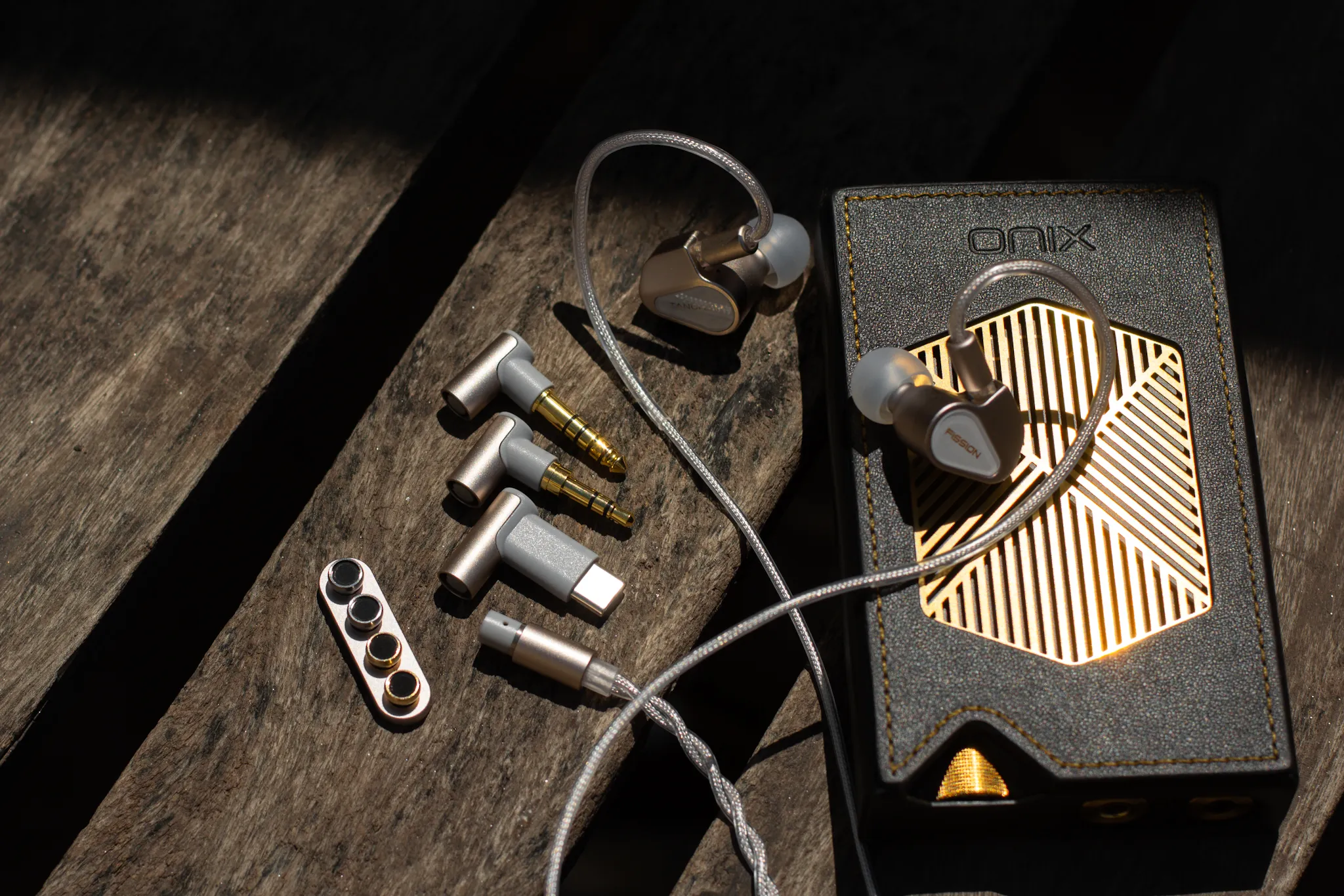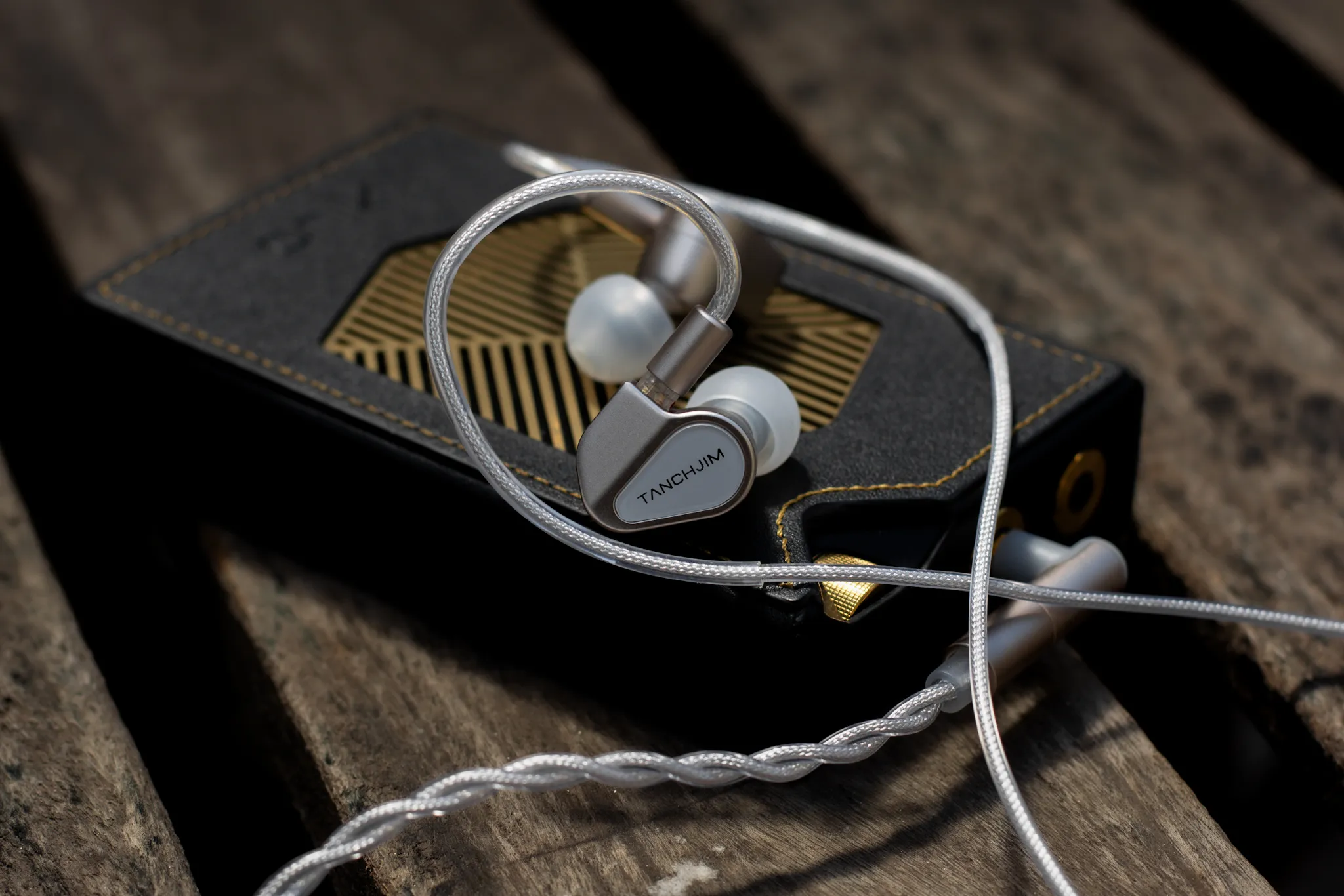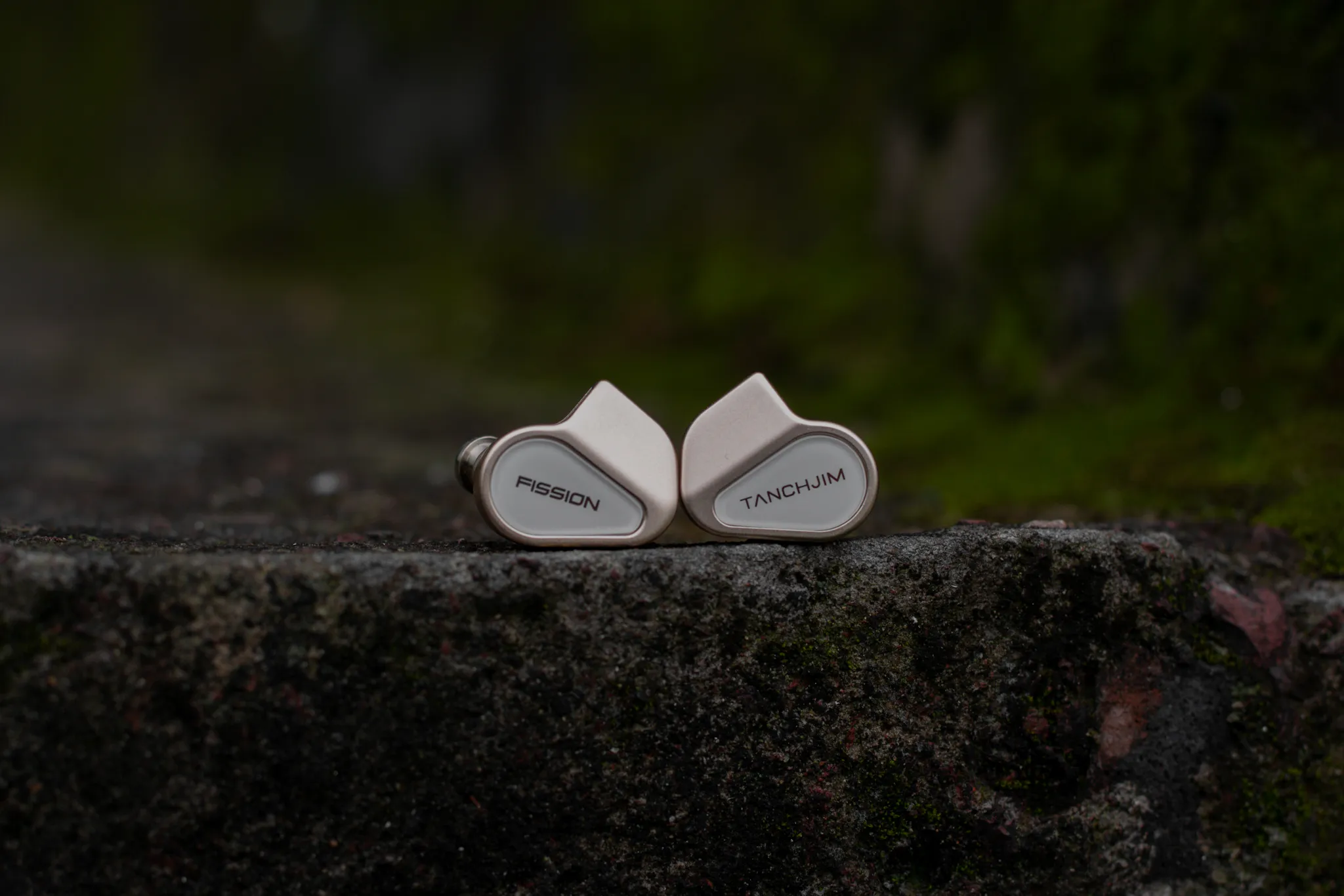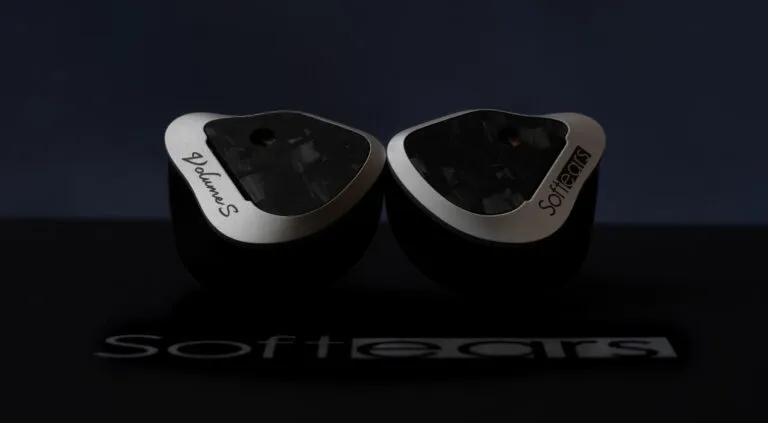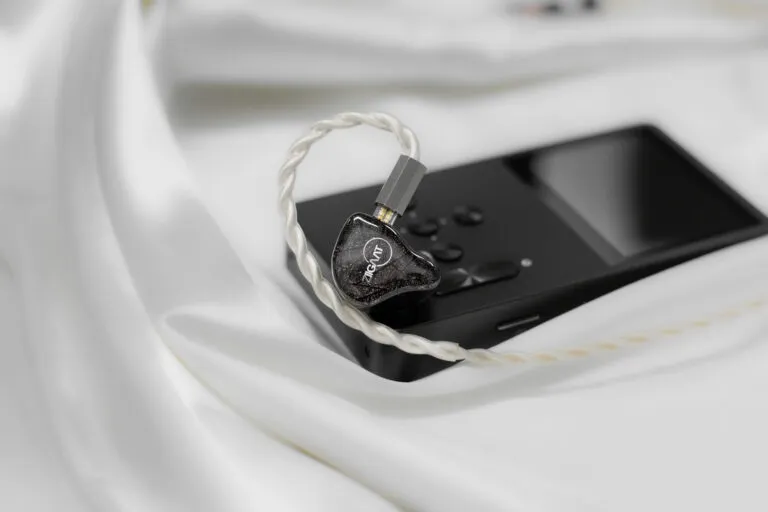When Tanchjim first announced the Fission, I was pretty curious. The design looked familiar, the build seemed premium, and they even added a tuning system with nozzles and a rear switch—something we don’t see often in this price range. Naturally, that built up a lot of hype for me. I expected something special, maybe a budget set that blends tuning flexibility with solid technical performance.

After spending some serious time with it—trying different genres, swapping nozzles, testing all tuning modes, and pairing it with both dongles and amps—I can say the experience is a bit of a mixed bag. It does a lot of things right, especially in mids and technicals, but not everything feels as polished as it looks on paper.
This review is based on my personal experience with the Fission using tracks like Adele – Someone Like You, Mark Ronson – Uptown Funk, and Volumes – Edge of the Earth. I’ve tried to be as honest and clear as possible so that you can decide if this one matches your taste or not. Let’s dive in.

Disclaimer
This unit was kindly provided by HiFiGo. They’ve always been one of the best platforms for audiophiles or anyone starting their journey into the world of audio. Whether you’re looking for beginner-level gear or high-end flagship products, HiFiGo has it all—plus global shipping and one of the most reliable warranty policies out there.
HiFiGo has been a long-time supporter of Sonic Mantra, and we truly appreciate how they’ve consistently encouraged us to stay honest and share our true, unbiased impressions with the community. Reviews like this wouldn’t be possible without their trust and support.
We’re genuinely thankful to HiFiGo for staying with us on this journey, and we hope to continue working together to bring you more exciting content and honest reviews in the future.
If you’re interested in purchasing the Tanchjim Fission or any other audio gear, we highly recommend checking out HiFiGo — they’ve got everything you need 😁
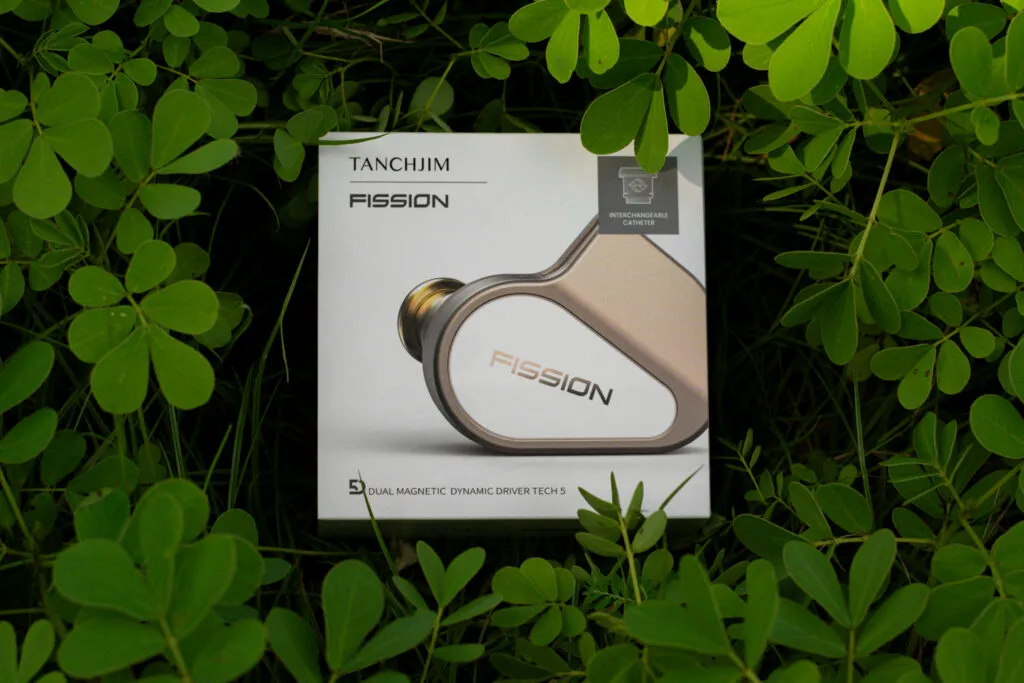
Build Quality, Design, Fit & Comfort
The build quality of the Tanchjim Fission is solid. It has a premium feel with CNC-machined aluminium alloy shells. One thing I personally liked is that they didn’t go with a full mirror finish—instead, it has a more matte look, which helps reduce fingerprint marks and scratches. That small decision gives it a premium touch, in my opinion.
The faceplate is glass, and it kinda reminds me of the Simgot EA1000 and Ikko OH10S in terms of the glossy layering. The shell itself is lightweight, and the finishing is really clean—no rough edges or noticeable flaws. Everything looks and feels polished.
Now talking about the design—yes, visually it may look similar to a few previous Tanchjim models like Bunny or 4U, and some people might say it resembles Moondrop Chu II or even Moondrop LAN. But I won’t go too deep into that, since design is a subjective thing. For me personally, I think it looks good enough. Sure, I’ve used IEMs that look more premium at this price point, but honestly, I don’t care too much about how something looks. My focus is always on the overall experience, and from that perspective, I think Tanchjim Fission holds up well.

The design and shape also help a lot in terms of fit and comfort. It sits nicely in the ear, very stable, and even after long listening sessions, I didn’t feel any discomfort. So for comfort, I’d give it a 10 out of 10.
The cable is also light and well-built, so there’s no downward pressure on the ear, which is a small but important detail. Noise isolation is decent too—not totally passive like CIEMs or foam tips, but good enough to block outside distractions during daily use.
So yeah, in terms of build quality, design, fit, and comfort, the Tanchjim Fission provides a solid experience, and I can honestly say I’m more than satisfied.
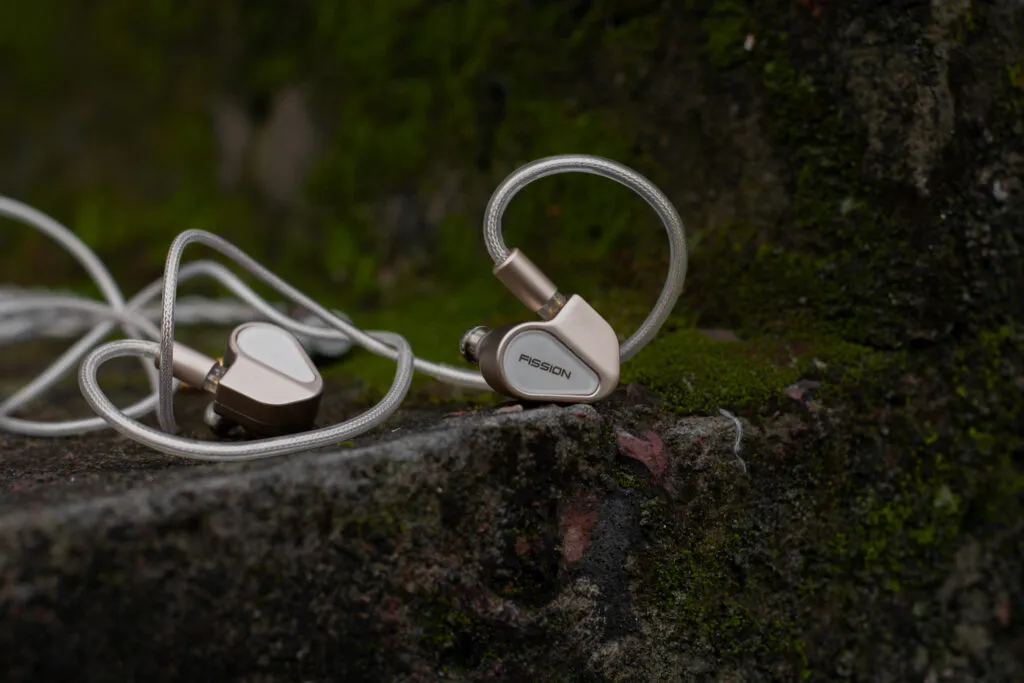
Stock Accessories
Okay, so the Tanchjim Fission is not priced at $130, and recently we’ve seen a lot of IEMs in the $60–$150 range offering outstanding stock accessories. So naturally, many people expected something good here as well. And yes—Tanchjim Fission comes with a really good cable.
The stock cable feels premium and well-built. It’s lightweight, doesn’t tangle much, and very easy to handle. The interchangeable termination system is solid, and it reminds me of DUNU’s Q-Lock Lite system. If you already own any Q-Lock plugs, you can actually use them with this cable. Right now, I’m using my DUNU 2.5mm plug with it on my Questyle QP2R, and it’s working perfectly fine. For the cable, I’d say it’s more than good—it pairs nicely with the IEM and makes the overall experience feel more complete.
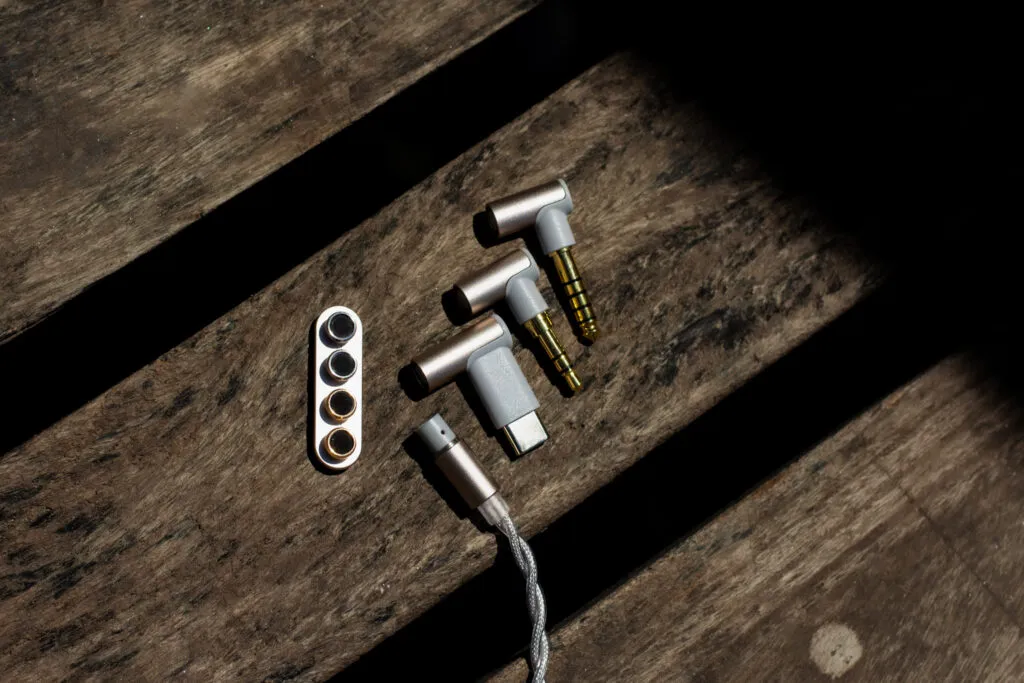
Now, about the stock tips and other accessories—this is where I think Tanchjim could’ve done better. The tips that come with the Fission are okay at best, nothing special. If you already have better aftermarket tips, I’d definitely recommend using those instead. You’ll likely get a better fit and improved sound.
As for the pouch, they just included a basic cloth bag, which honestly doesn’t offer much protection. I don’t even have anything to say about it. Just feels like a missed opportunity. So, Tanchjim please 🙏—even a basic hard case would be much more useful for everyday carry. It’s not expensive, but it goes a long way in making the overall unboxing and user experience feel better, especially for newcomers. It also improves the brand image and attention to detail.
So yeah, overall stock accessories are just okay for me. You can definitely get by with what’s included, but if you have better aftermarket gear lying around, I’d recommend switching to those for a more polished experience

Testing Source
- Questyle qp2r / Onix xm5 / Cowon Plenue R2 / Astell & kern SP1000M / Shanling M5 Ultra / Cayin N3 UltraI / Hiby RS2 / Shanling M3 Plus / Ibasso DX180 / Hiby R4 / Hiby R5 saber / Hiby R3 ii / F.Audio FA5 /
- Hiby FD5 / Shanling H5 / KAEI-TAP2 ( AMP ) / ifi idsd signature / fosi k7 / fosi gr40
- Ibasso DC Elite / Cayin ru7 / Questyle M15 / ONIX Alpha XI 1 / Epz tp35 / Hiby FC4 / Hiby fc3
- BQEYZ Lin and Nicehck tc3 ( Budget DAC )

The sound Performance
Tonality
Tanchjim Fission have a neutral-balanced type of sound. It mainly focus on the mid-range and technical performance. It have really good details and resolution, also the treble is slightly energetic and sometimes sounds a bit analytical to me. The bass is recessed, so it sounds light and not that fun honestly.
Mid-range
The female vocal is the highlight here. Female vocals sound natural with a slightly energetic presentation, but it still manage the “sss” and “shsh” type sharpness well. It doesn’t go harsh or piercing, which is nice. Vocals sound clean with good detail and the resolution is honestly the best part for me. Female vocals feel lively and forward sounding, and it’s easy to enjoy soft vocals or more dynamic ones like Adele – “Someone Like You”, where her breathing, soft falsetto and even background echo come out clearly. The piano tone in that track also sounds clean and very natural.
Male vocal on the other hand… even though female vocal is outstanding here, male vocal feels just okay for me—not the best. I usually like my male vocals heavy and thick, with more weight. Fission can’t really give me that. But it’s not like the male vocals are bad or shouty, they just not match my preference. The tone is still natural and slightly balanced, and it should be totally fine for people who like a clean male vocal. For example, Mark Knopfler’s voice in “Romeo and Juliet” sounds clear and textured, but it missing a bit of body and depth for my taste. So, if you prefer thick, meaty type vocals—this might not satisfy. But if you prefer a more natural and clean tone, this will do just fine.
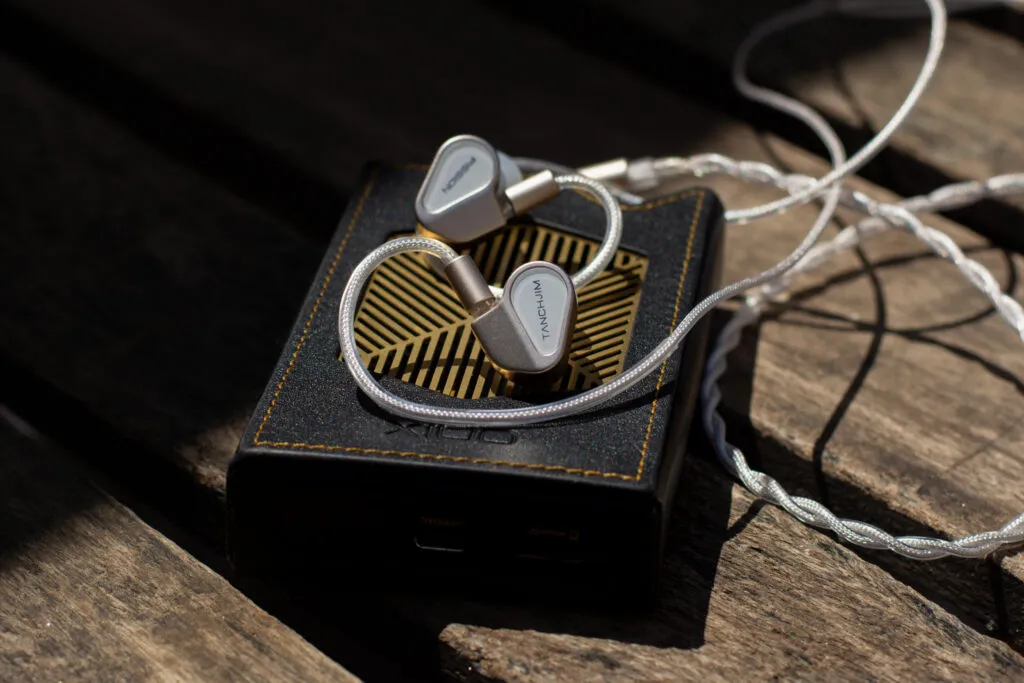
Treble
The treble is also a great part of Tanchjim Fission. It’s extended well, airy but not sharp. Though on some tracks, the treble energy can feel a bit more than usual. But I think that’s more related to how the track is mixed or mastered. For example, on Uptown Funk – Mark Ronson, the hi-hats and brass section pop quite sharply, but it’s not harsh. In well-mastered tracks, the Fission gives really good resolution and can reveal micro details easily. I think this is one of the key strong points of this IEM.
You can clearly hear the snare texture, the brass layering, and background percussions in that track. Also, some acoustic tracks with good recording will really shine on this. Even small finger slides on guitar strings or echo trails in the background are audible, which is impressive at this price.

Bass
Okay, so the bass is not really the strength of Tanchjim Fission. And I’m not even a basshead, but still sometimes it feels lacking to me. The bass feels a bit dry and light. The sub-bass is recessed, not the deepest. It’s there, but very subtle. Still, if you use a warmer source or an amp with bass boost, then it helps a lot. I’ve tried it with iFi Hip-DAC 2 and it pairs quite well actually. Adds just enough warmth to make it feel more balanced.
The mid-bass is tight and has a clean attack. It’s fast, and drum hits sound pretty dynamic with good speed. But yeah, overall it lack that weight and authority that some people would want. On Edge of the Earth – Volumes, the kick drums and bass guitars sound tight, and you can feel the fast impact, but the rumble is definitely not strong. It’s more of a monitor-style bass, clean and clear, but not fun or heavy.
Technical Performance
When it comes to technical performance, the Tanchjim Fission actually performs really well for the price. The imaging is precise, and it’s easy to tell where each instrument is placed in the mix. You can clearly pick out left–right separation and layering, especially in well-mastered tracks.
The overall resolution and detail retrieval is one of the best things about this IEM. Micro details like background echoes, reverb tails, finger movements on guitar strings—all of that comes through clean. Instruments like hi-hats, snare rolls, and acoustic plucks feel sharp and clean without being overly boosted.
The soundstage is also decent—not super wide, but definitely above average. It’s more spacious than intimate and doesn’t feel overly congested. You get a good sense of both width and depth, which helps in more complex tracks like orchestral music or anything with layered instruments.
The dynamic range is great too. It handles both quiet and loud parts with good control. In live recordings or dramatic musical shifts, it doesn’t lose clarity or get messy. Fast transitions—like snare fills or vocal bursts—are handled smoothly without smearing.
Overall, the technicality is great for this price range. If you’re looking for something that’s clean, resolving, and well-separated, the Fission can definitely deliver.

Tuning Nozzle & Tuning Wheel Experience
Now let’s talk about the tuning system, which honestly. left me a bit disappointed.
Tanchjim included 3 nozzles—Brass, Titanium, Stainless Steel or “Standard”—and a 4-position tuning wheel on the back of the IEM shell. The four modes are:

- Default
- Pop
- Hi-Fi
- Atmosphere

Now, I probably should’ve mentioned this before talking about the sound, but honestly—I don’t think it made enough difference for me to rearrange the review.
Personally, I didn’t feel much of a real change between the nozzle types. The bass, which is already on the lighter side, becomes even more reduced in some tuning modes. That made even less sense to me. If your IEM already lacks bass, making it even thinner with different filters doesn’t help at all.
In my experience, the Default mode is the best tuning. It sounds the most balanced and natural. The Pop mode is okay—slightly warmer—but again, it’s not a big enough change to make me switch. The others, like Hi-Fi and Atmosphere, just mess up the balance more. In fact, it makes the sound leaner and honestly worse in my opinion.
I was genuinely excited about this tuning system when I first saw the design, but once I started using it… all that excitement slowly disappeared. It became more like a gimmick than a useful feature. I feel like instead of giving so many tuning options that barely work, Tanchjim could have just included a better pouch or better eartips, which would’ve helped the actual experience more.
If you still want to try all the modes and experiment, sure, you can. But if you ask me—stick to the Default mode and don’t waste your time too much with the tuning system.
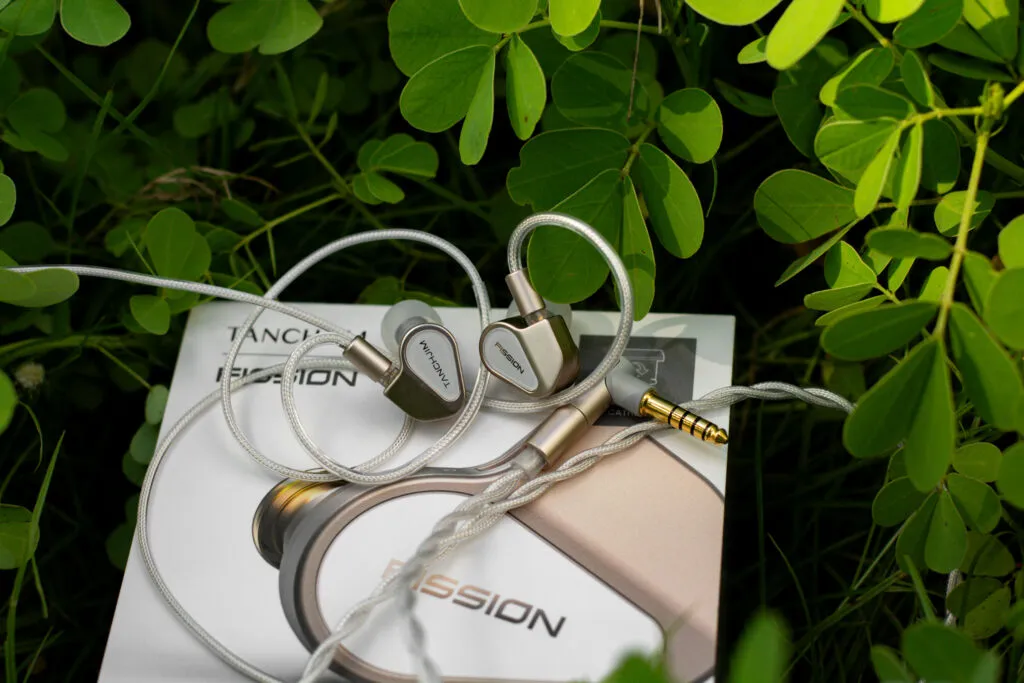
Conclusion
After spending enough time with the Tanchjim Fission, it’s clear to me that this IEM is tuned for people who value clarity, midrange focus, and technical performance over warmth or fun. It’s not trying to be a crowd-pleaser or bass-heavy set—and that’s okay. What it does, it does well.
The female vocals are clearly the star of the show—forward, detailed, and natural with just the right energy. Treble is clean, extended, and airy, with good micro-detail especially on well-mastered tracks. Imaging, resolution, and dynamic range are also strong points, making this IEM feel more refined than what its price might suggest.
Yes, the bass is on the lighter side, and male vocals might lack body for those who prefer a thicker tone. The tuning system—though interesting on paper—felt more like a gimmick to me. Most of the modes don’t improve anything significantly, and in some cases, they actually take away from the sound. I’d say the default tuning mode is the best, and most people can just stick with that.
Build quality is excellent, the cable is great (especially with that Q-Lock–like system), and comfort is top-tier. However, the tips and pouch could’ve been better, and I do feel Tanchjim missed a chance to give users a more complete experience there.
So, in the end—if your priority is detail, vocal clarity, and clean tuning with good technicalities, and you’re okay with light bass, then the Fission is a very solid choice. It’s not for everyone, but for the right listener—it delivers more than expected.


